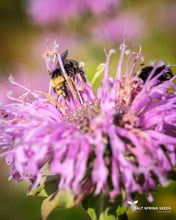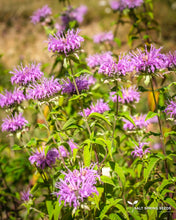Wild Bergamot is a beautiful perennial with bright rose to purplish flowers, appearing June to August, on unbranched stems that are two to four feet high. It is in the mint family and its mint fragrance is wonderful. Also called, Bee Balm, it attracts many bees, butterflies and humming birds and definitely deserves a place in medicinal and wildflower gardens.
Monarda fistulosa, grows in open, moist to moderately dry prairies, foothills and montane sites and is widespread and abundant as a native plant across North America. Monarda didyma, sometimes called Oswego Tea, is found in similar habitats, has a very crimson flower and is native to mostly eastern North America.
Bergamot gets its name from the similarity it has in aroma to the bergamot orange that is used to flavour Earl Grey tea.
Both Monarda species have a host of medicinal and edible properties. Bee balm’s soothing effect on the digestive tract helps to relieve indigestion, bloating and nausea. Its antispasmodic properties help to alleviate menstrual cramps as well as coughs. It has long been used to treat colds and flu. It has a gentle calming effect on the nervous system, which is helpful in ameliorating anxiety and stress, even for sensitive children.
In herbal books, you can find Bee Balm recipes for teas, tinctures, salves, steams, poultices, mouth washes, jellies, vinegars and salad toppers!
Some First Nation people perfumed their favourite horses with the chewed leaves of wild bergamot and some used it as an insect repellent and burned it in smudges to drive insects away.
Bergamot is relatively easy to grow from seeds, cuttings or root divisions. It spreads via underground rhizomes and can become invasive in the right situations. It grows well in partial shade to full sun and prefers rich, well-draining soil in a spot with plenty of air circulation. Sow seeds in flats, barely covering them, late February to mid-March or direct sow early spring or in October.
Bee balm makes an excellent cutflower.




